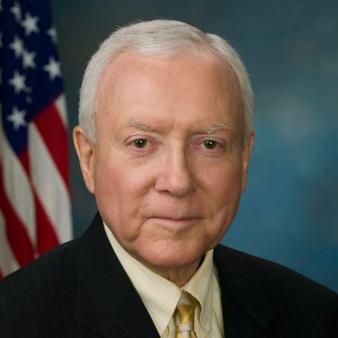- Category:
- Richest Business › CEOs
- Net Worth:
- $830 Million
- Birthdate:
- Apr 15, 1937 - Sep 17, 2020 (83 years old)
- Birthplace:
- Salt Lake City
- Gender:
- Male
What Was Robert Gore's Net Worth?
Robert Gore was an American engineer and scientist who had a net worth of $830 million at the time of his death in 2020. Robert Gore (also known as "Bob") earned fortune and fame as the inventor of the waterproof fabric Gore-Tex, and for much of his life, he was the richest person in Delaware. Robert attracted widespread attention in the science community for creating a way to insulate cable and wires with PTFE tape by stretching and expanding heated PTFE rods. The resulting product became known as Gore-Tex, a breathable and waterproof material that would go on to be used in everything from clothes to shoes, guitar strings and space suits. Robert's parents started the company W. L. Gore & Associates in 1958, and he served as President from 1976 to 2000 and Chairman from 2000 until 2016. In 2022, W. L. Gore & Associates reported a revenue of $4.5 billion and had around 12,000 employees. Robert died on September 17, 2020, at the age of 83 after a long illness.
Early Life
Robert Gore was born Robert W. Gore on April 15, 1937, in Salt Lake City, Utah. He was the son of Genevieve ("Vieve") and Wilbert ("Bill") Gore, and he had four younger siblings, Susan, Dave, Ginger, and Betty. In 1950, the Gore family moved to Delaware for Bill's job at Wilmington's DuPont Experimental Station, and they stayed with friends while Bill built their home. Robert attended the University of Delaware, earning a bachelor's degree in chemical engineering in 1959. He then enrolled at the University of Minnesota, where he earned a master's degree and a PhD in chemical engineering.
Career
While Bill was working for DuPont, he was experimenting at home with the company's materials, such as Teflon PTFE. He wanted to use PTFE to insulate electrical wires, but powdered PTFE was not producing a consistent coating on the wires. In April 1957, Bill explained his predicament to Robert, who suggested using a white tape version of PTFE on the wires. Bill tried Robert's idea, and it was successful. The experiment resulted in a PTFE-insulated ribbon cable that contained several copper conductors, which later became known as Multi-Tet Cable. This solution made it possible for Bill and Vieve to launch W. L. Gore & Associates the following year, and for the first two years, they ran the business out of their basement. A 1960 brochure stated that W. L. Gore & Associates "was established for the purpose of developing and utilizing technology in the field of fluorocarbon polymers, especially polytetrafluoroethylene," which "have a great and undeveloped potential to contribute value to society." Robert was listed as the inventor of Multi-Tet Cable when the company registered its first patent, and the cable came to be used in computers such as the IBM System/360. W. L. Gore & Associates went on to provide cables for the Apollo space craft, and one of their cables was used to attach the Apollo 11 to a seismograph on the moon's surface. In mid-1961, Robert was elected to the W. L. Gore & Associates board of directors while he was attending the University of Minnesota.
Robert began working as a research associate at W. L. Gore & Associates after earning his PhD in 1963, and he became the technical and research leader four years later. In 1969, he made the discovery that led to Gore-Tex. According to the Science History Institute website, "Gore was researching a new process for stretching extruded PTFE into pipe-thread tape when he discovered that the polymer could be 'expanded.' The discovery followed a series of unsuccessful experiments in which he was attempting to stretch heated rods of PTFE by about 10%. As it turned out, the right conditions for stretching PTFE were counterintuitive. Instead of slowly stretching the heated material he applied a sudden, accelerating yank that unexpectedly caused it to stretch about 800%, which resulted in the transformation of solid PTFE into a microporous structure that was about 70% air." Three patents were issued for the product, and it was introduced under the trademark Gore-Tex. Though Gore-Tex is best known for being a waterproof, breathable fabric used in outdoor and sporting gear, it has also been used in medical applications because "the porosity of Gore-Tex permits the body's own tissue to grow through the material, integrating grafted material into the circulation system." In 1976, Robert replaced his father as W. L. Gore & Associates' President and CEO. In 2000, he left the role of President and served as the company's Chairman until 2016.
Personal Life
Robert married Sarah "Sally" Coons, his third wife, in 1977. One of Gore's stepsons from that marriage, Chris Coons, is a United States senator, and he has served as both Vice Chair and Chair of the Senate Ethics Committee. Robert later married Jane Arnold, and they remained together until his death in September 2020. According to Gore's obituary, he had a daughter named Sharon and three sons, Tom, Brian, and Scott, as well as six stepchildren, 28 grandchildren, and 11 great-grandchildren.
Robert was an emeritus member of the University of Delaware's board of trustees from 1992 to 2010, and he was chairman of the board from 1999 to 2007. According to an article in the "University of Delaware Messenger," "He and his family contributed $18.5 million to finance the construction of Gore Hall in the mid-1990s, and in 2005 he donated $1 million in his mother's memory to fund the Genevieve W. Gore Recital Hall in the newly built Roselle Center for the Arts. In late 2011, Gore donated $1 million to establish the Robert W. Gore Fellowship in the College of Engineering." In 2013, Robert donated $10 million to the university to build the Bob and Jane Gore Research Laboratories, an engineering and science lab measuring 194,000 square feet. He also supported the University of Minnesota, donating $1 million for the establishment of a First-Year Graduate Student Fellowship Initiative in Chemical Engineering & Materials Science in 2001 and $10 million for the Gore Annex, a 40,000 square foot addition to the Twin Cities campus' Amundson Hall, in 2012.
Death
On September 17, 2020, Gore passed away at the age of 83 in Earleville, Maryland. His company confirmed that he died "peacefully at home following a long illness." Robert's nephew Bret Snyder, who was chair of the company's board of directors at the time, said of his uncle, "Bob's innovative spirit shaped our Enterprise from the very beginning, paving the way for W. L. Gore & Associates to improve lives and industries. We will continue to build on his legacy with a commitment toward breaking new ground and developing solutions that make the world a better place." Snyder was appointed President and CEO of the company in October 2020.
Awards and Honors
In 1995, Robert was elected to the nonprofit institution the National Academy of Engineering. In 2003, he was honored with the Winthrop-Sears Medal due to his "entrepreneurial achievement that contributes to the vitality of the chemical industry and the betterment of mankind." In 2005, the Society of Chemical Industry presented Gore with the Perkin Medal, which is given to scientists who are responsible for "innovation in applied chemistry resulting in outstanding commercial development." The Perkin Medal is the U.S. chemical industry's highest honor. In 2006, he was inducted into the American National Inventors Hall of Fame for his work developing Gore-Tex. In 2001, Robert received an honorary doctorate from Scotland's Heriot-Watt University.






















